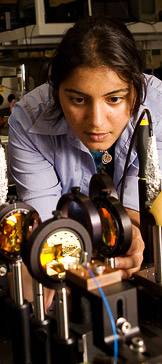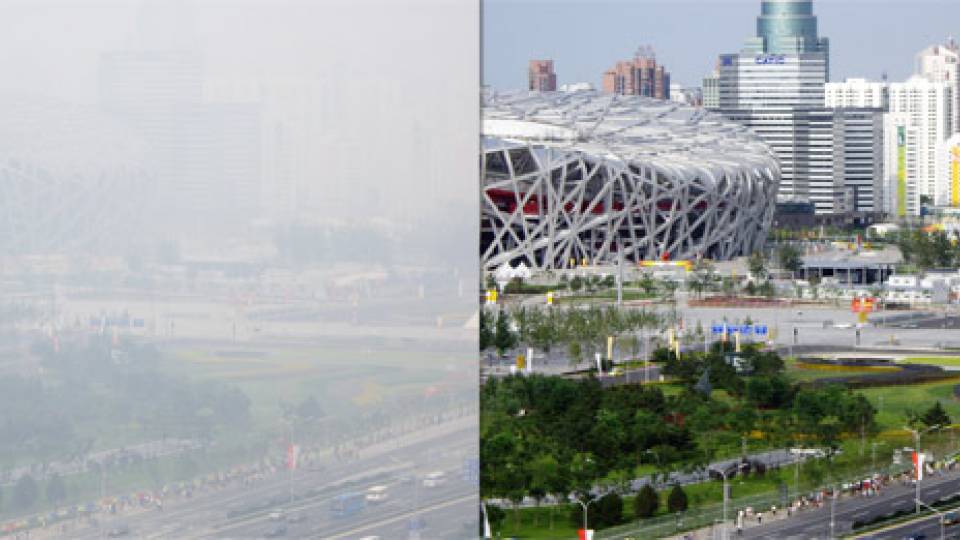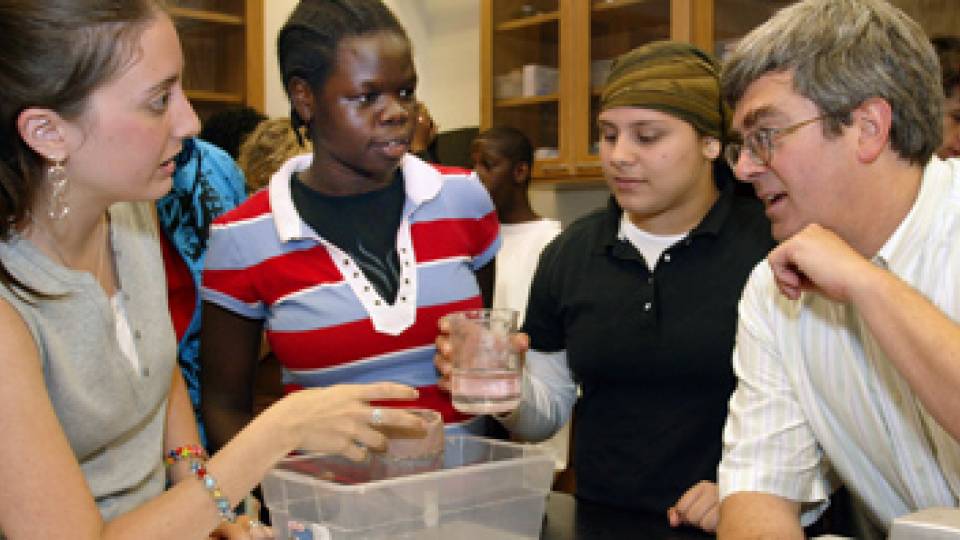Shortly after 11 on a July morning, the halls of the Engineering Quadrangle are noticeably quiet, but in the Bowen Hall conference room a group of researchers is hard at work, gathered for a conference call to share the details of their current projects.
David Tersegno discusses a new sensor system that may further the understanding of cloud formation. Anjali Bhatt describes efforts to optimize special lasers that detect minute amounts of substances in the air and human breath. Nevin Raj explains work with a new kind of material that bends light "backward."
They may be engaged in research projects on the cutting edge of engineering, but Tersegno and Bhatt haven't finished college yet -- and Raj is still in high school. They are among 26 undergraduates and six high school students working alongside researchers in the Mid-Infrared Technologies for Health and the Environment (MIRTHE) center for the summer.
The goal of the National Science Foundation (NSF)-funded MIRTHE center, headquartered at Princeton and directed by electrical engineering professor Claire Gmachl, is to develop systems for sensing trace quantities of gas for use in medical diagnostics and for sensing pollutants or toxins in the atmosphere.
"We want these students to learn how science is done and how engineering is done in a bigger context," Gmachl said. "How do people interact? How do they take a big goal, break it down into manageable parts and assemble a team to accomplish this goal?"
Sixteen of the undergraduates, including Tersegno and Bhatt, and four high school students, including Raj, are spending the summer at Princeton. The remainder of the students are working in labs at MIRTHE partner institutions: City College of New York, Johns Hopkins University, Rice University, Texas A&M University and the University of Maryland, Baltimore County.
The weekly, Web-based conference calls provide an opportunity for all of the students to interact with one another and fellow MIRTHE researchers on a regular basis. At the same time, it exposes them to the challenges and opportunities presented by working with researchers at multiple institutions. At the culmination of the nine-week program next month, the students and MIRTHE researchers will gather at Johns Hopkins for a weeklong academic conference.
The chance to work as part of team on real-world science and engineering projects also is helping to guide students in the process of making decisions about their futures.
"One of the big questions for science and engineering majors is, ‘Do I want to go into academia or industry?'" said Bhatt, a rising sophomore at Harvard University. "This is a great opportunity to see how it's all put together because MIRTHE is based in academia, but interacts so closely with industry. We're working on the design of lasers that will be more industrially applicable."
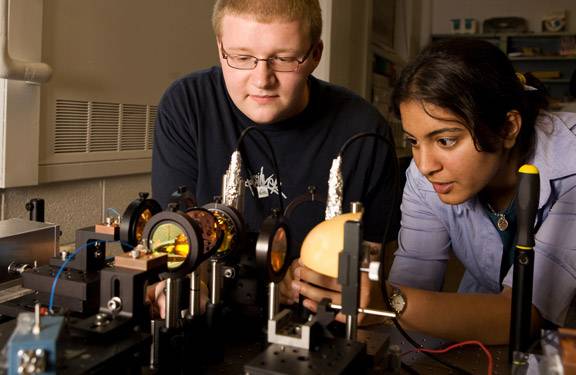
Bhatt works with fellow MIRTHE summer student Bryan Bruce, a rising senior at University of Maryland, Baltimore County.
Bhatt, who grew up in Princeton, first worked in Gmachl's lab when she was a high school student at the Lawrenceville School. A physics major, she is working with Gmachl this summer to develop new ways to cool the special lasers used in the sensing systems.
A powerful electric current is passed through these devices, called quantum cascade lasers, to make them emit light in the mid-infrared region of the spectrum. Light in this region is able to detect minute amounts of gases in the atmosphere that are "invisible" to other wavelengths of light. But the power required to produce this light can destroy the lasers if they overheat.
Currently, the researchers cool the devices in the lab by surrounding them with liquid nitrogen, which is at a temperature of -196 degrees Celsius. If the researchers are to realize their goal of creating handheld sensors with these lasers, they must develop new cooling mechanisms that can be incorporated into the design of the lasers themselves. Bhatt is investigating whether different ways of passing the electric current through the lasers might provide a novel way to carry heat away from the devices.
While Bhatt's work is firmly grounded in physics, Tersegno's project is focused on sensing applications. Advised by Mark Zondlo, assistant professor of civil and environmental engineering, Tersegno is working with a new laser-based water vapor sensor that may provide insights into how clouds form. The sensor is mounted on a NSF Gulfstream-V research aircraft based at the National Center for Atmospheric Research in Boulder, Colo.
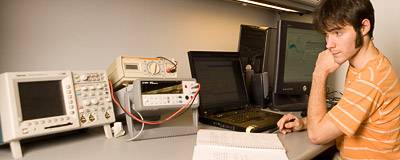
David Tersegno, a rising junior at St. Lawrence University, is working with a new laser-based water vapor sensor that may provide insights into how clouds form. Advised by Princeton engineer Mark Zondlo, Tersegno obtains and analyzes live-streaming data feeds from a sensor mounted on a research aircraft in Colorado.
As part of his project, Tersegno spent a week at the Colorado facility to meet the researchers and garner a greater understanding of the sensor's mechanics. Now back at Princeton, he accesses a live-streaming data feed to obtain the instrument's latest measurements, which he then analyzes.
"It is really exciting to work on a team with these scientists who care about what they're doing and whose work has real-world applications and real-world effects," said Tersegno, a rising junior majoring in physics and mathematics at St. Lawrence University.
Bhatt, Tersegno and their 24 fellow undergraduates conducting research at MIRTHE institutions this summer are part of a Research Experiences for Undergraduates program funded by the National Science Foundation. Some 150 undergraduates from colleges and universities throughout the nation applied for the select program. Another 23 students from around the country are participating in a similar program at the Princeton Center for Complex Materials.
While there are many Research Experience for Undergraduate programs at institutions throughout the nation, the MIRTHE program, which is organized by education outreach director Roxanne Zellin, is somewhat unique given the center's multi-institutional organization and the opportunity to interact with students and researchers throughout the United States.
"The program in whole goes far and beyond any individual laboratory research project, and this is the ultimate strength of the program," Zondlo said.
While the high school students in the MIRTHE lab are not part of the official National Science Foundation summer program, their experiences are just as meaningful as those of their undergraduate colleagues.
"I like how the MIRTHE program allows me to apply the basic principles I have learned in school to a cutting-edge application," said Raj, a rising senior at Hunterdon Central Regional High School in Fleminton, N.J. Raj is doing research to understand the behavior of a material created in Gmachl's lab that bends light in a direction opposite from all substances that occur in nature. Made of the same ingredients found in computer chips, this "metamaterial" may have important implications for high-speed communications and sensor systems able to detect disease or terrorist threats.
"I am not only learning the process of research, but I am gaining valuable interpersonal skills and a feel for the research environment," Raj said. "It is definitely a rewarding experience."
